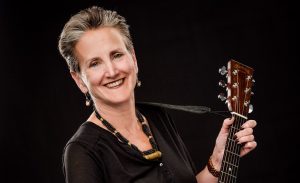Some 20 years ago, most conversations about contemporary Yiddish culture contained words such as “threatened” and “dying.” Today, it is usually talked about as “cool,” “hip” and “hot.”
Mandy Patinkin, for example, recently sang a portion of Stitches in Yiddish on The Late Show and the YouTube clip of it already has over 600,000 views. Patinkin also recently presented the prestigious Mlotek Prize for Yiddish Continuity at New York’s SummerStage festival to Daniel Kahn, a Jewish-American artist now based in Germany, whose Yiddish version of Leonard Cohen’s Hallelujah has been viewed almost a million times.
Rokhl Kaffrissen’s monthly column in Tablet magazine discusses some of the most innovative and creative happenings that are taking place in Jewish-American culture today, and so much of it is in Yiddish. Kaffrissen has made a point of noting that the word “revival” is not applicable to modern Yiddish culture anymore, because, well, it has already been revived.
I am writing this column against a breaking deadline in Jyväskylä, Finland. I am attending a conference on memory and narration. I cannot say that there is lots of Yiddish spoken here, but, despite what you may have heard, Finland is not a stranger to Jewish history or Yiddish culture.
Since the late 19th century, about 2,000 Jews have consistently been living in Finland, mostly in Helsinki. They survived the Second World War relatively intact, even though Finland was on the German side. Some Finnish Jews even served in the Axis army and Helsinki’s Jewish cemetery features a monument to the fallen Jewish-Finnish soldiers of that era.
Most Finnish Jews spoke Swedish and Yiddish, and a vibrant Yiddish culture existed here. Finnish linguist and historian Simo Muir uncovered a number of Yiddish plays performed in Finland in the 1920s, including a Yiddish cabaret called Merchant of Helsinki, by playwright and author Jac Weinstein. The cabaret was performed just last year in Sydney. According to Muir, during the war, Weinstein also wrote poems, songs and sketches in Swedish and Yiddish about atrocities committed against Jews. Most Finnish Jews do not speak Yiddish nowadays, but the University of Helsinki offers Yiddish courses from time to time.
At the conference, I talked with a colleague of mine from Spain, who said that he is studying Yiddish because of the influx of people claiming Sephardic roots that are applying for Spanish citizenship. I did not break it to him that Sephardic Jews do not speak Yiddish, because I would love to see Spain become a new centre for Yiddish culture in the world, along with Germany, Israel, France and Poland.
READ: A JEWISH GUIDE TO SURVIVING IN A SCARY WORLD
The consumers and creators of modern Yiddish culture include a wide variety of people who care about a wide range of issues, from where Yiddish culture stands on human rights, to medieval history. Charles University in Prague will offer an intensive summer school on early modern Yiddish this year.
One does not need to travel far to see “new Yiddish culture.” Just last month, Toronto hosted a number of Yiddish events, including one with Evgeny Kissin, who’s arguably the greatest pianist alive, reading his own Yiddish poems and his Yiddish translations of Russian poetry. Kissin explained that he saw Yiddish as a key that will bridge Russian and Jewish cultures.
Yiddish speakers from the New World are not necessarily Jewish, nor is Yiddish always their mother tongue, but they are very well aware of the histories associated with the language’s speakers: their triumphs, their losses and the discrimination they often faced. They are determined to make the world a better place, one Yiddish learner at a time.
But I have to wrap things up. I am getting on a plane to Germany to deliver two public lectures, both of them in Yiddish. Zayt mir ale gezunt!
Author

Anna Shternshis is the Al and Malka Green professor of Yiddish Studies and director of Anne Tanenbaum Centre for Jewish Studies, University of Toronto.
View all posts







